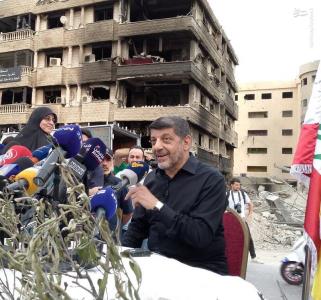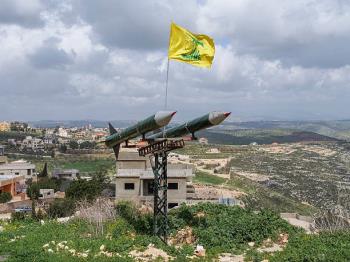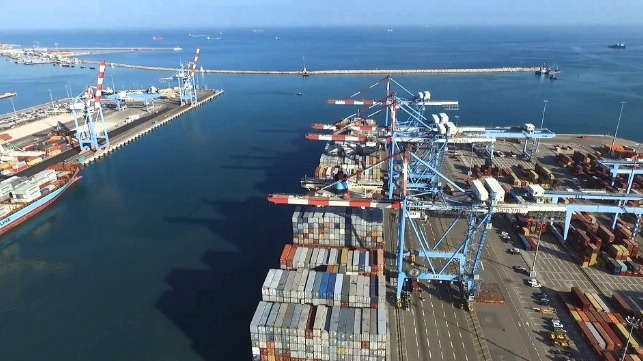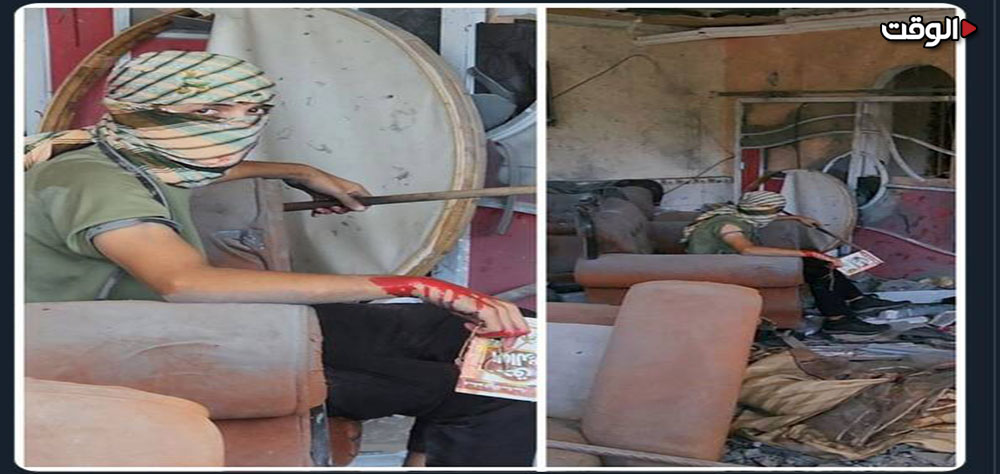Alwaght- After the successful Iranian missile response to Tel Aviv deep into the occupied territories under Operation True Promise II Tuesday, the Israelis threatened to respond, and even some Israeli sources said that Israel will strike targets beyond Iran to cover the whole region. But is the Israeli hand really open to respond to Iranian missile strikes? Can the Israelis, as some Israeli resources claim, attack Iranian infrastructures?
What infrastructures?
When referring to attack on Iran's infrastructures, the Israeli sources talk about three categories of targets:
Oil facilities, power plants, and most importantly nuclear facilities
It seems that Israel faces considerable restrictions striking each of these infrastructures.
Restrictions of attack on power plants
The dispersion and multiplicity of Iran's power plants is one of the most important limitations for the Israeli regime to attack such facilities. Iran has a large number of combined cycle, hydroelectric power plants, and in this situation it is not easy for Israeli fighter jets to target these power plants and enter the depth of Iranian soil, and it may lead to the downing of them in the heart of Iran. Therefore, it is not an easy task for the Israelis to target the power plants to paralyze Iran's electricity production.
Restrictions of attack on oil facilities
One of the biggest restrictions of attacking Iran's oil facilities is the fear of Tel Aviv's Western partners of disruption of the oil market. In the West, there is a lot of concern about the increase in oil prices as a result of a possible attack on Iran's oil facilities. US President Joe Biden, as Israel's closest ally, has said in a statement that if "I were in Israel, I would think of other options instead of attacking Iran's oil facilities."
On the other hand, like the multiplicity of power plants, the large size and number of Iran's oil and gas facilities will make it very difficult to attack them, and the dispersion of Iran's oil and refinery facilities makes it beyond the power of Israeli fighters to strike them.
Restrictions of attacking nuclear sites
One of the hardest options of the Israelis is attacking the nuclear sites of Iran. The Iranian nuclear sites are underground structures and practically their bombing is useless.
On the other hand, Iran's nuclear energy is a native and scientific science that is in the possession of hundreds of Iranian scientists and will not be destroyed by bombing physical facilities.
On the other hand, the American and Western allies of Israel are seriously opposed to any attack and bombing of Iran's nuclear facilities, because they know that any attack on Iran's nuclear facilities means giving Iran a legitimate right to raise the level of nuclear deterrence. In fact, the West is worried that if Iran's nuclear facilities are bombed, Iran's next step will be building a higher level of nuclear deterrence.
Also, the issue of distance and how to carry out any air attack on Iran's nuclear facilities is a big challenge for the regime of Tel Aviv because this requires refueling a large number of fighters over the buffer countries (Jordan-Iraq-Syria-Saudi Arabia or Turkey) and naturally Iran considers allowing Israeli use of airspace of any third country for attack on its soil as a participation in the aggression and an authorization for Tehran to launch retaliatory strikes.
Response for response
It is not only the restrictions that make Israel doubt its ability to attack Iran, but also the most important concern of Tel Aviv is about the time after the attack. In other words, should it attack, Israel will trigger higher level of Iranian response, and this response could cost Israel its existence.
Iran's power
It is not difficult for the Iranians to launch barrage of missiles on Israel. Just as Iran succeeded in firing 200 ballistic missiles in Operation True Promise II last week, Iran's next response may include firing several times as larger number. According to the spokesman of the Israeli army, Iran's recent missile attack hit Nevatim Airbase in the center of occupied territories. Iran's next attack can include large number of missiles that will hit deeper into Israel.
Israeli smallness and weakness
One of the biggest weaknesses of the Israeli regime is its territorial smallness or what is politically and militarily called lack of strategic depth, and in this situation hitting targets in this limited geography is not a difficult task for Iran. Additionally, the number of Israel's oil facilities and power plants is not very large, and Iran's missile barrage can cripple Israel in terms of electricity and energy in the first few minutes.
Also, Israel is threatening to attack Iran's infrastructure while it is in one of the weakest conditions of its 76-year-old life, both politically and economically. Due to military expenses and direct damage to the Israeli economy, the debt of Netanyahu's government also increased, reaching 62 percent of GDP. Israel's ministry of finance announced that budget deficit reached 6.2 percent of the GDP by the end of March and it is expected to continue growing and reach 6.6 percent by the end of 2024.
Since the beginning of this year, a deficit of 26 billion shekels ($7 billion) has been recorded in the public budget of Israel, and in the last 12 months, this deficit has hit a new record of 117 billion shekels ($32 billion), the highest in the history of this regime.
Possible targets of Iran's next-level retaliation
Iran has a target list including power plants, oil facilities, military bases, and strategic sites of Israel:
- Such airbases as Nevatim, Hatsarim, Hatsur, Ramon, Palmachim-Ramet David and Ben Gurion International Airport (house of Airbase 27 of Air Force)
- Dimona nuclear site and reactor in Negev Desert
- Mossad headquarters or the Unit 8200 command center near Tel Aviv
- Hagit combined cycle power plant with a capacity of 1,371 megawatts in northern Israel
- Orot Rabin power plant located in Haifa in the north of Israel with a capacity of 1260 megawatts
- Gezer power plant with a capacity of 744 megawatts in Modi'in-Makabim-Reut city in the center of Israel
- Eshkol power plant supplies 7.3 percent of the electricity to the Israeli cities and is located in the Ashdod industrial area in the center of Israel.
- Rutenberg Power Plant as the newest thermal power plant in Israel and the second largest power plant in terms of production capacity in Ashkelon in the center of Israel.
- Ramet Hovav power plant with a capacity of 1157 megawatts in Azazme.
- Tamar gas field
- Bazan oil refinery in Haifa as the largest oil refinery in Israel
- Leviathan gas field is one of the largest natural gas fields in Israel, 130 km west of Haifa
- Meged oil field in the city of Rosh Haayin
- Ashdod oil refinery as the second largest oil refinery in Israel
- Eilat oil terminal and warehouse as Israel's largest port for oil imports
- Heletz oilfield as one of Israel's largest offshore oil fields near the Gaza border



























